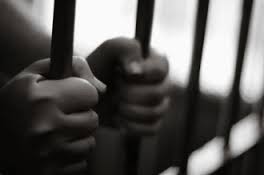
Criminal Responsibility of Children under the Doli Incapax Principle: A perspective on the culpability of the Northern Beaches Children charged with rape.
- September 14, 2016
- ckadmin
- No comments
By Elly McQuinn, Trainee Lawyer
The news event sweeping the nation is the alleged sexual assaults against a 6 year old child by two 12 year old males in Sydney’s Northern beaches.
For many, this may raise the question how culpable and criminally liable are they as children? The answer is tied to the legal principle ‘Doli Incapax’ which is Latin for ‘incapable of evil’. In Australia, this principle means children under 10 years of age are irrefutably presumed not be found guilty of an offence.[1] For children aged between 10 and 14 years, the age bracket of the alleged offenders in this case, this presumption remains but is conditional. [2] Such children are presumed incapable of forming intent to commit criminal acts, however, this presumption can be rebutted where the prosecution sufficiently demonstrates, in addition to proving all elements of the crime itself, that the child offender knew the wrongfulness of their actions.[3] It is likely then, if this case proceeds to trial the defence counsel for the accused Sydney boys will use the Doli Incapax as a defence in the proceedings. To rebut this defence, the following test must be applied within the NSW jurisdiction:
Prosecution must, by adducing supporting evidence and proving beyond reasonable doubt, that the children had knowledge and understood that their actions were ‘seriously wrong as opposed to naughty’. [4]
It is likely the children will be heard in the Children’s Court division of the Magistrates Court of New South Wales. The possible outcomes of their hearing will be:
- Acquittal, namely found not guilty of any charges;
- Dismissal of charges with a caution, meaning no criminal conviction;[5]
- Good Behaviour Bond, namely pledging to be law abiding and abide by set conditions for a specified period, or similarly Probation whereby more likely to be supervised by a Juvenile Justice and is more serious if breached; [6]
- Fine of $1,100 per offence; [7]
- Youth Justice Conference, namely a meeting with support people, a case convenor, police representative and the victim to say sorry and determine ways of making amends for damage caused; [8]
- Deferral of sentencing, whereby imposing a sentence will be postponed until the completion of an event such as finishing rehabilitation; [9]
- Community Service Order, ordering the offender to complete a determined number of hours of community service. This is looked at as serious and an alternative means of imprisonment; [10]
- Control Order/Imprisonment, a term of incarceration served at a Juvenile Justice Centre. For children this is used as a ‘last resort’ and only applied for very serious offences. [11]
Relevant to this case, there are jurisdictional limits on the Children’s Court when imposing terms of imprisonment. These are two years for one offence, and three years for multiple offences. [12] Therefore, if the children proceed to trial and are eventually found guilty and convicted of all charges, they face a maximum of three years incarceration in a Juvenile Justice Centre.
The laws surrounding child offenders in Australia are very surprising and hold strong contrast to adult offenders. Do you think they should be held criminally liable to the same extent as adults? Or should we protect children from entering the prison system and potentially limiting their ability to rehabilitate and form respectful members of society?
References:
A Articles
Gregor Urbas ‘The Age of Criminal Responsibility’, 2000 Trends and Issues in Crime and Criminal Justice, no 181.
Thomas Crofts ‘Doli Incapax: Why Children Deserve its Protection’ Murdoch University Electronic Journal of Law, 2003, Vol. 10 No 3.
B Cases
C v DPP (1996) 1 AC 1.
C Legislation
Children (Criminal Proceedings) Act 1987 NSW.
D Websites:
Legal Aid New South Wales ‘Get Court Smart’ http://www.legalaid.nsw.gov.au/publications/factsheets-and-resources/get-court-smart/sentencing-in-the-childrens-court.
Siobhan Fogarty ‘Sydney boys, 12, charged with rape of six-year-old girl in primary school toilet block’ 2016, ABC News http://www.abc.net.au/news/2016-09-01/12yo-boys-charged-with-rape-of-girl-at-sydney-primary-school/7805828 .
[1] Section 5 Children (Criminal Proceedings) Act 1987 NSW.
[2] Thomas Crofts ‘Doli Incapax: Why Children Deserve its Protection’ Murdoch University Electronic Journal of Law, 2003, Vol. 10 No 3.
[3] C v DPP (1996) 1 AC 1; Gregor Urbas ‘The Age of Criminal Responsibility’, 2000 Trends and Issues in Crime and Criminal Justice, no 181.
[4] Ibid.
[5] Legal Aid New South Wales ‘Get Court Smart’ http://www.legalaid.nsw.gov.au/publications/factsheets-and-resources/get-court-smart/sentencing-in-the-childrens-court.
[6] Ibid.
[7] Ibid.
[8] Ibid.
[9] Ibid.
[10] Ibid.
[11] Ibid.
[12] Ibid.

Leave a Comment